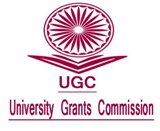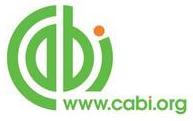Socio-Economic Analysis of Brackishwater Cage Culture in Kerala
DOI:
https://doi.org/10.26725/JEE.2020.2.32.6500-6507Keywords:
Cage culture; socio-demographic; farmers; productivity; Kerala.Abstract
Cage culture has been one of the most dependable fish production systems in the world. For wide adoption in countries like India, it needs to be technically feasible and socially acceptable. In the current study, the socio economic factors are taken into account for investigating the influence of these factors on the performance and productivity of the cage culture operations in central Kerala. An extensive survey was carried out among the cage farmers of the coastal districts of central Kerala to study the influence of socio-economic indicators in the overall production and performance. The study revealed that major socioeconomic features like age, occupation, level of education, experience in cage culture, technical skill, financial status and gender participation had significant effects on the cage culture productivity and economic returns.References
Aswathy N, & Joseph, I. (2018). Economic viability of cage farming of Asian seabass in the coastal waters of Kerala. International Journal of Fisheries and Aquatic Studies, 6(5), 368-371.
Aswathy, N, & Joseph, I. (2019). Economic Feasibility and Resource Use Efficiency of Coastal Cage Fish Farming in Kerala. Economic Affairs, 64(1), 151-155.
Ghosh, S, Megarajan, S, Ranjan, R, Dash, B, Pattnaik, P, Edward, L, & Xavier, B. (2016). Growth performance of Asian seabass Lates calcarifer stocked at varying densities in floating cages in Godavari Estuary, Andhra Pradesh, India. Indian Journal of Fisheries, 61(3), 146-149.
Kailasam, M, Ravisankar, T, & Ponniah, A. G. (2014). Recent Advances in Brackish Water Finfish Aquaculture: Prospects and Constraints. CIBA.
Kappen, D. C, Dinesh, K, & Divya, N. D. (2019). Constraints in the Adoption of Cage Aquaculture Practices in Ernakulam District, Kerala. Journal of Extension Education, 30(4); 6165-6172
Narayanakumar, R. (2009). Economic analysis of cage culture of seabass, CMFRI & NFDB Kochi, pp 120-122
Downloads
Published
How to Cite
Issue
Section
License
Copyright (c) 2020 https://creativecommons.org/licenses/by-nc-sa/4.0/

This work is licensed under a Creative Commons Attribution-NonCommercial-ShareAlike 4.0 International License.
Authors who publish with JEE agree to the following terms:
- Authors retain copyright and grant JEE right of first publication with the work simultaneously licensed under a Creative Commons Attribution License that allows others to share the work with an acknowledgement of the work's authorship and initial publication in this journal.
- Authors are able to enter into separate, additional contractual arrangements for the non-exclusive distribution of the journal's published version of the work (e.g., post it to an institutional repository or publish it in a book), with an acknowledgement of its initial publication in this journal.
- Authors are permitted and encouraged to post their work online (e.g., in institutional repositories or on their website) prior to and during the submission process, as it can lead to productive exchanges, as well as earlier and greater citation of published work (See The Effect of Open Access).
Extension Education Society
https://creativecommons.org/licenses/by-nc-sa/4.0/
This work is licensed under a Creative Commons Attribution-NonCommercial-ShareAlike 4.0 International License.














.png)

